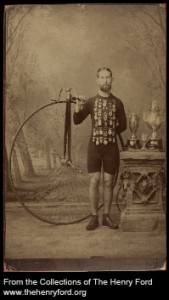Valentine's Surprises

 This time of year I feel so nostalgic about activities surrounding Valentine's Day! I fondly recall making cards for my mother on construction paper by coloring with crayons. Many looked a lot like this one in the museum's collections.
This time of year I feel so nostalgic about activities surrounding Valentine's Day! I fondly recall making cards for my mother on construction paper by coloring with crayons. Many looked a lot like this one in the museum's collections.I also have many happy memories of exchanging cards with my classmates in elementary school, especially cutouts featuring kids or animals.
Take a look at this Cutout Valentine, "The Flags Spell 'Come Back to Me' Because I'm Lonely as You Can See," 1945. A mechanical card with two pieces hinged together so that the boat can rock from side to side. It was a gift to the museum from Mrs. Harvey Firestone, Jr. (Elizabeth Parke Firestone) and came in with the archival collection, Firestone Family Papers.



This year I searched our collections for more selections of valentines and found some surprises. I happened to find several which struck me as a quite unique. One is designed to look like a promissory note, picture above, from a bank in the 1850s. Another is a cutout card featuring kids playing with radio equipment in the 1920s - then the latest technology! The third example is a card that folds out to form an elaborate 3D tissue bell.


Then I came across this photo of a Valentine's Day Party. It is identified as a Girls' Club Valentine Dance, but they look like ladies and a gentleman to me. The room is decorated with crepe paper streamers and a large heart-shaped doorway. The sign above the doorway reads, "Kiss Me!"
My searches also came up with a man named Eugene Valentine. Once I saw this I realized that Valentine is indeed a last name, not just a romantic holiday. The name is from the Latin "Valentinus" based on "valere," meaning to be strong. In the British Isles, it has been recorded from medieval times as a first and then a last name with many different spellings, including Valentyn, Vallentine, and Valentine.
I also found a business named Valentine-Souvenir Company of New York City. There are several dozen postcards made by this company in our collections, but not one is a Valentine card. It turns out this company was formed from several later mergers of the founding company started by John Valentine of Dundee, Scotland, in 1825. The original Valentine Company made lithograph prints before starting to produce postcards in 1896. From 1914 to 1923 the Valentine-Souvenir Company of New York City printed postcards using the letterpress halftone color printing process.

I think that any search for Valentine's Day cards needs to include heart shapes as a design motif. In addition to the cards, I expected to find jewelry, dishes and quilts to have heart motifs, but here's something unexpected: a forerunner of the bicycle made with heart shapes cut out of the wooden wheels.

What would Valentine's Day be without a box of chocolates? This 1950s magazine advertisement says it all. Happy Valentine's Day!

Cynthia Read Miller, Curator of Photographs and Prints, is continually fascinated with the museum’s over one million historical graphics.
by Cynthia Read Miller, holidays, archives, correspondence, home life, Valentine's Day


Facebook Comments